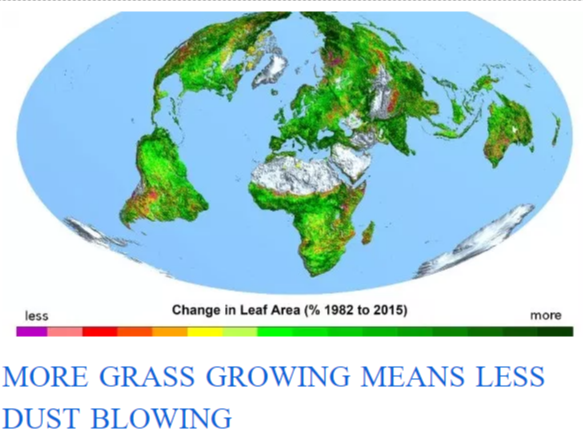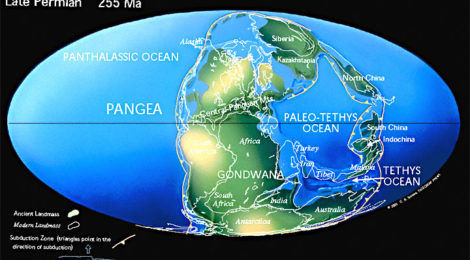
Ancient Paleozoic Oceans Recieved More Iron Rich Dust Than Todays Dust Starved Oceans
Paleozoic atmosphere 500-300 million years ago saw CO2 at 18 times of today, 7000ppm vs. 400ppm
Mother Nature Took Charge And Cooled Things Off With Her Plankton Air-Con Pumps
New scientific report shows high levels of dust stimulated marine primary productivity, dramatically reducing atmospheric CO2, making Earth’s penultimate icehouse age.
From dust to dust, it is all about the dust!
The word Paleozoic means, ‘ancient life’, it was the age when there was a great flowering of life on this blue planet of ours. It was a time of dramatic changes in climate although those changes took millions, often tens of millions, of years to make the slow change. One of the driving forces of that slow ancient climate change was CO2. Nature was experimenting with CO2, temperature, and evolution, she wasn’t sure about it all, she was just working things out, like always she found the way.
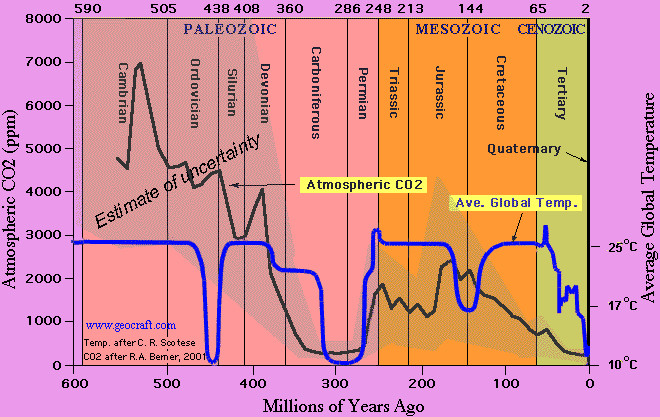
Ancient epochs, ice ages, CO2, and global warming. Note that big blue temperature dip in the middle, that’s when the dust was falling, the plankton blooming, and the world was cooling. Click to enlarge
Now a new paper in the Journal of The Geological Society of America reveals some of the detective work that unravels what Nature was up to. This new evidence adds to the long history of scientific study that has shown that one of the most potent aspects of nature is dust. That is the repeating relationship seen throughout the ages where more atmospheric dust means more primary productivity in marine ecosystems, you know … the big blue part of this blue planet.
It’s largely the iron in the dust along with other mineral nutrients that nourish the ocean pastures, supporting phytoplankton that forms the basis of marine food webs. The paper reveals that ancient dust dynamically modified the CO2 concentration in the atmosphere in partnership with the ocean pasture phytoplankton resulting in the dramatic reduction of the atmospheric CO2.
It’s hard to study ancient times at the macro level, let alone at the microscopic level. It takes real dedication to tease out the connections amongst the key elements of Nature in the distant past. Preliminary evidence had long made the case that large-scale dust enrichment occurred in the late Paleozoic, but results were mostly confined to the paleo-equatorial region. This new study is the first to explore the effects of iron dusting in the paleo-mid-latitudes. OK so now we can say for sure, it really was a global change.
“It is fascinating that this mechanism that has been explored extensively in the current climate, and the glacial/interglacial cycles, could also be operating so far in the past, atmospheric dust and iron deposition to the oceans, and how climate and humans have modified the atmospheric iron cycle,” said Natalie Mahowald of Cornell who has reviewed the study.
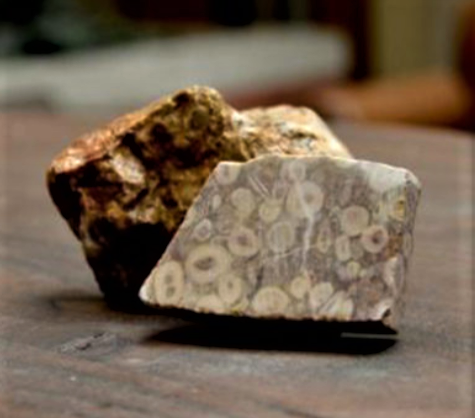
Paleozoic seabed rock from Iran offers a window to an ancient time of climate change where the ocean pastures and plankton kept this blue planet cool, indeed cold… brrrrh
The study team analyzed dust contained in carbonate rock samples collected from the Alborz Mountains in northern Iran. These rocks were on the seafloor hundreds of millions of years ago. Researcher Mehrdad Sardar Abadi had brought the samples from his Iranian homeland to the United States when he began his position as a postdoctoral researcher at the University of Oklahoma.
The samples came from strata of an ancient calm shallow sea. The dust that made up the rocks wasn’t transported by water but instead fell gently like rain as dust fall from the atmosphere. Sardar Abadi and his team used coupled plasma–mass spectrometry and laser particle size analysis to extract 300-million-year-old dust from the samples.
They discovered that most of the dust particles were less than 15 micrometers in size and had traveled long distances in the wind—possibly more than 1,000 kilometers—before deposition. They also found that samples with larger amounts of most highly bioactive iron tended to be in the smaller dust particles and those correlated with higher amounts of primary phytoplankton.
“It is estimated that this ancient dust contained twice the bioavailable iron as the modern dust that fertilizes the Amazon Rainforest. Together, the results suggest that Earth’s atmosphere was much dustier during this ancient time,” according to a statement about the research.
“While iron is not the only micronutrient potentially carried in dust, it is estimated that this ancient dust contained twice the bioavailable iron as the modern dust that fertilizes the Amazon Rainforest.” 700 million tonnes per year of Saharan dust blows across the Atlantic and lands in the Amazon.
Iron is a vital mineral micronutrient that super-charges photosynthesis, especially in phytoplankton including the green algae and cyanobacteria (what we used to call blue-green algae). Over millions of years, iron dust falling in the oceans supported the sustainable health and abundance of these microbial communities. This made them the greatest factor in carbon sequestration in the ocean and on earth, as the oceans have vastly more area and biomass than does the land. The ocean’s plants created a more oxygenated atmosphere. Animal life needed that oxygen in its evolutionary journey.
“I think that what we see in the fossil record, very specifically in Mehrdad’s research, but more broadly through the fossil record of the late Paleozoic, is a remarkable algal dominance,” Soreghan said.
“I noted the remarkable high-abundance and low-diversity record of algal and microbial activity in Mehrdad’s ‘high-dust’ interval.…Such a consequence generally means that the algae out-competed everything else, with repercussions in the ecosystem. It’s definitely an ecosystem disturbance.”
Fossil Fool Age Rapid Crisis needs slow stone-age Paleozoic thinking
Today’s oceans are receiving the least amount of dust ever, but their dust has gone missing in less than 100 years. That reduction of dust is because our rapidly increasing CO2 levels are growing more grass on land. More grass growing means less dust blowing. That’s an insanely more rapid change than what Nature is accustomed to.
In ancient times the changes in dust and climate clearly swung back and forth but it took millions, even tens of millions of years to happen. We’ve proven that Mother Nature’s ocean pastures that have become clear blue deserts can be immediately brought back to historic health and abundance with a bit of ‘stone dust’, vital natural iron-rich dust.
The late great John Martin in his historic presentation (courtesy of NASA) of his life’s work studying the link between dust, ocean pasture productivity, CO2, and ice ages explained this all back in 1990. Today this fine paper adds to his epic work on those ancient epochs. Even in 1990 he noted it was the important question of the time. Was there any hope that the global warming this blue planet was suffering might be slowed or indeed stopped.
Here’s the political cartoon from the Boston Globe that told the story and truth in a form even a primary school pupil could understand. It’s all about the dust.
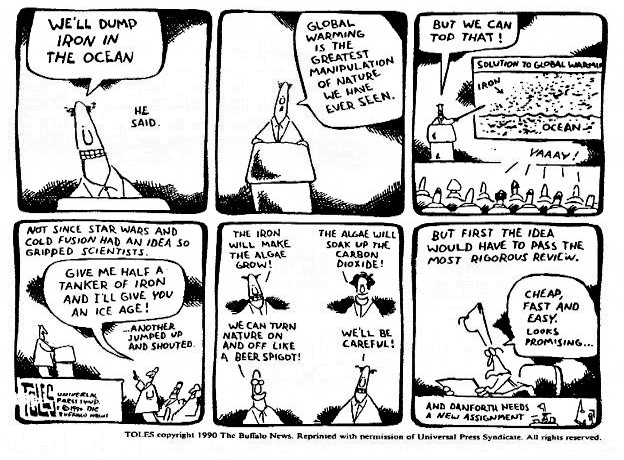
John Martin got it right!









